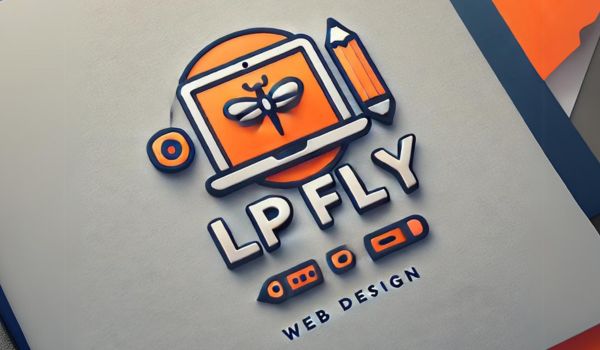Introduction
Elementor has transformed website design, making it accessible for beginners and experts alike. With its drag-and-drop functionality, customizable widgets, and flexible styling options, Elementor offers everything you need to create a professional-looking website without coding. But there’s even more to Elementor than meets the eye. In this post, we’ll explore ten hidden features in Elementor that can enhance your workflow, elevate your designs, and help you build stunning websites with ease. Whether you’re new to Elementor or have been using it for a while, these lesser-known tricks will help you make the most of this powerful tool.
1. Navigator for Easier Page Management
Elementor’s Navigator is a handy tool that makes managing complex layouts a breeze. It shows a panel listing all the elements on your page, allowing you to jump between sections, move elements, or hide them temporarily. This feature is especially useful for pages with multiple layers and sections.
Example: If you’re designing a multi-section homepage, you can use Navigator to access the footer or header instantly, without scrolling through the entire page.
2. Right-Click Menu for Quick Access
The right-click menu in Elementor provides quick options like copy, paste, and duplicate, saving you time while editing. Right-clicking on a widget or section gives you an array of shortcuts, making it faster to adjust settings, duplicate elements, or move sections around.
Example: If you need to apply the same style to multiple headings, just right-click and copy the style from one, then paste it onto the others.
3. Custom Positioning for Precise Layouts
Elementor’s custom positioning feature allows you to position widgets anywhere on the page, giving you full control over your layout. You can use absolute or fixed positioning to create unique designs, perfect for adding overlapping elements or aligning elements creatively.
Example: For a modern design, try positioning an image behind a text box, creating a visually appealing layered look.
4. Finder for Faster Navigation
The Finder is a search tool that allows you to quickly jump to any page, template, or section in Elementor. Just press CMD+E (on Mac) or CTRL+E (on Windows) to open the Finder, type in the name of the page or template you want, and go directly there.
Example: If you’re working on multiple pages, like a “Services” page and a “Contact” page, use Finder to switch between them without navigating through the WordPress dashboard.
5. Inline Text Editing for Quick Changes
With inline text editing, you can edit text directly on the page, saving time and making it easier to visualize changes as you type. This feature is especially helpful for quickly tweaking content without opening the text settings panel.
Example: If you’re adjusting a headline, just click directly on it and start typing, seeing how it looks in real-time.
6. Custom CSS for Advanced Styling
For users with some knowledge of CSS, Elementor Pro allows you to add custom CSS directly to specific elements. This is perfect for creating unique styles or animations that go beyond Elementor’s default settings, giving you greater control over your site’s appearance.
Example: Add a subtle hover animation to buttons, making them slightly larger when a visitor hovers over them, creating an interactive experience.
7. Background Overlay for Visual Appeal
The Background Overlay feature allows you to add a transparent color or gradient on top of an image, which is great for adding text readability over a busy image. It’s a simple yet powerful way to enhance the visual appeal of headers or hero sections.
Example: Use a dark overlay over a scenic background image with white text on top for a travel blog homepage, making the text stand out while keeping the image visible.
8. Save Sections as Templates for Reusability
If you create a section that you’d like to reuse on other pages, Elementor lets you save it as a template. This saves time and helps maintain design consistency across your site. You can insert saved templates with a single click, making it easy to build cohesive pages.
Example: Save a “Testimonials” section and add it to your homepage, services page, and about page to showcase customer feedback without recreating it each time.
9. Motion Effects for Dynamic Design
Elementor’s Motion Effects feature lets you add animations, including scrolling effects and mouse-based animations, creating a dynamic experience for visitors. These subtle animations can make your website more engaging and visually interesting.
Example: Add a “fade-in” effect to sections as visitors scroll, creating a sense of movement that guides them through the content naturally.
10. Role Manager to Control Access
If you’re working on a team or have clients who need limited access to your Elementor site, the Role Manager lets you control who can edit certain areas. This feature is especially useful for designers working with clients who may accidentally alter parts of the design.
Example: Set editing permissions so clients can update text or images without affecting the layout or other design elements, keeping your work intact.
Conclusion
Elementor’s hidden features are what make it such a versatile tool for website design. By exploring these lesser-known tricks, you can unlock even more of Elementor’s potential, enhancing both your workflow and the quality of your designs. Take time to experiment with each of these tips, and don’t be afraid to try new things. The more you explore, the more confident you’ll become in using Elementor’s powerful features. For additional learning, Elementor’s official documentation and community resources are excellent places to deepen your knowledge.
Happy designing, and enjoy discovering the endless possibilities of Elementor!
